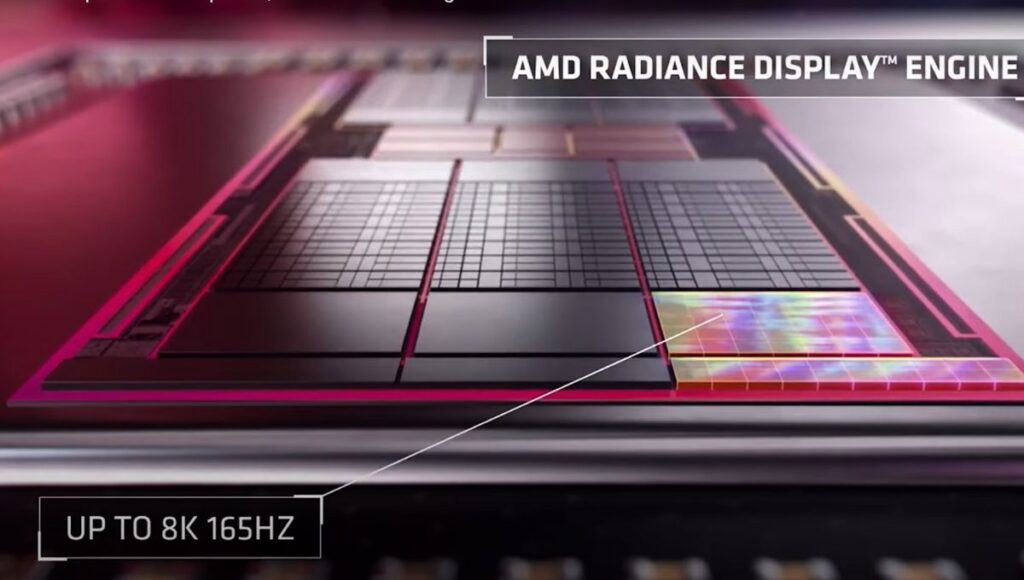In recent years, AMD’s graphics cards have often rivaled Nvidia’s in rasterization performance and boasted greater memory capacities. However, AMD has consistently lagged in hardware-accelerated ray tracing since its inception in consumer hardware. The latest insights into AMD’s forthcoming GPU lineup suggest this trend will persist.

According to sources familiar with the matter, AMD’s upcoming RDNA 4 graphics cards are projected to offer only a modest 25 percent improvement in ray tracing performance over the current Radeon RX 7000 series. If Nvidia releases its next lineup, codenamed Blackwell, before the year’s end, it’s likely to maintain dominance in ray tracing capabilities.
Speculation has long hinted that RDNA 4 would prioritize mid-range and mainstream tiers, omitting enthusiast products. However, recent updates on performance metrics and die sizes may alter this landscape before the final hardware release. Despite these changes, AMD purportedly plans to introduce two GPUs capable of matching mid-range RTX 4000 cards at notably lower price points.
More must-reads:
- Roblox Fishing Simulator Unveils 2024 Exclusive Rewards
- 10 Most Anticipated Video Games of Recent Times: Gear Up for Epic Adventures!
- Exclusive: Peacemaker & Janet Cage Join Mortal Kombat 1! Click Now for the First Gameplay Trailer!
- Don’t Miss Out: EasySMX T37 Switch Controller Now Only $19.99!
- Legendary Pokémon Battles Await in Pokémon Scarlet & Violet!
The larger variant, N48, is expected to have a smaller die size, potentially between 237 and 204 mm2, and could offer performance slightly below the RX 7900 XT at a price of around $500. With an anticipated 25 percent ray tracing performance boost, it may challenge the RTX 4070 Super but might fall short against a theoretical mid-range Blackwell card.
On the other hand, the smaller N44 die aims for the lower end of the market, positioned between the RX 7600 and 7700 XT in performance while costing consumers less, possibly below $300, with $199 being a plausible figure. These details, however, remain subject to change.
AMD’s strategy with RDNA 4 appears to be conservative, potentially reserving resources for RDNA 5, which is expected to play a more significant role in both gaming and data center applications. Earlier speculation suggested RDNA 5 might adopt a chipset-based design. Additionally, rumors suggest Microsoft may integrate an RDNA 5 GPU into a future Xbox model slated for 2026, though this remains speculative.
Regarding architecture, Navi 44 and Navi 48 are reportedly built on TSMC’s N4P process. Contrary to previous generations, the naming convention for these chips deviates from tradition, with the lower-end Navi 44 and the higher-end Navi 48. Initial rumors of a multichip module (MCM) architecture for RDNA 4 have been dispelled, with current indications pointing towards a monolithic die, while MCM is speculated for RDNA 5.
Performance expectations for RDNA 4 suggest that while it may not surpass AMD’s own flagship GPU, it should improve ray tracing and offer competitive pricing. The flagship RX 8800 XT is anticipated to closely match the RX 7900 XT and compete with Nvidia’s RTX 4080. However, AMD’s ability to outperform Nvidia in ray tracing with RDNA 4 remains uncertain.
In summary, while AMD’s RDNA 4 holds promise for improved performance and competitive pricing, particularly in mid-range segments, its capacity to close the gap with Nvidia in ray tracing remains speculative. As the release date approaches, further leaks and announcements will shed light on the true capabilities of these GPUs.